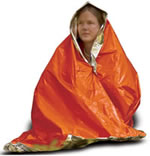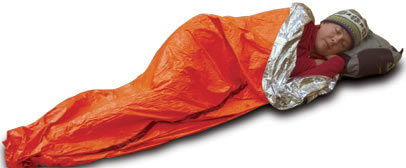Hypothermia
Warmth - Shelter - Water and Food
HYPOTHERMIA
While generally considered a first aid subject, hypothermia can be one of the most dangerous threats to survival. As such, it needs to be addressed specifically.
Simply defined, hypothermia is the condition occurring when the inner temperature of the body falls to a level at which vital organs slow and ultimately cease to function. Because this can occur in relatively mild conditions, it is a danger at any time of the year. Most hypothermia occurs at temperatures between 30 and 50 F (-1 to -10 C) when conditions are wet and windy.
It is most important that hypothermia be recognized as early as possible. Fortunately, symptoms are easily recognized and preventive measures will avoid a tragedy.
Symptoms:
Hypothermia is a progressive illness with symptoms following a defined sequence as the core temperature drops:
- You feel cold and have to exercise to keep warm.
- You start to shiver and feel numb.
- Shivering becomes intense and uncontrollable.
- Shivering becomes violent. Speaking is difficult. Thinking becomes sluggish and your mind starts to wander.
- Shivering decreases and muscles start to stiffen. Muscle coordination becomes difficult and movements become erratic and jerky. Appreciation of the seriousness of the situation is vague or lacking. However, you may still maintain the appearance of knowing where you are and what is going on.
- You become irrational - lose control with your environment and drift into a stupor. Pulse and respiration are slowed.
- No response to the spoken word. You fall into unconsciousness. Most reflexes cease to function and heartbeat becomes erratic.
- Heart and lung control centers of the brain stop functioning.
Treatment:
- As soon as symptoms are recognized, remove the victim from the source - get him out of the cold, wind, and rain.
- Remove wet clothes; replace with warm dry clothes, if possible, and place in a sleeping bag or wrap in warm blankets, etc.
- If conscious, consider warm drinks. No alcohol!
- If semi-conscious or worse, try to keep the victim awake
- If required, use heated rocks (well wrapped) or blankets. Warm the core-body trunk area. Do not stimulate the extremities.
- Do not allow movement until the entire body has returned to normal or near-normal temperature.
.
Survival Guide - Warmth - Shelter - Water and Food
Stay Warm items below:
 |
 |
|
Emergency Blanket
|
Emergency Bivvy Sack
|
